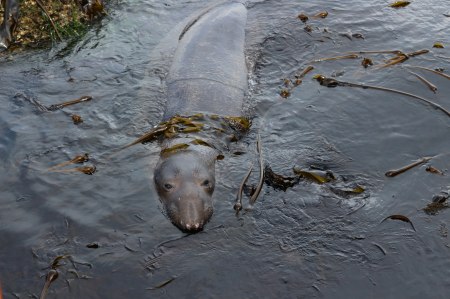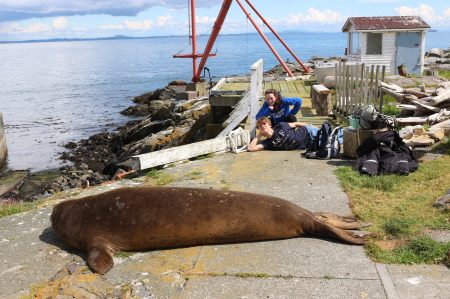During the first year field exam at Race Rocks on Friday 12 May (post to follow…), there were 11 northern elephant seals (Mirounga angustirostris) that provided both entertainment and answers to the students writing the exam.
One of the questions on the field exam involved observing elephant seals and the seals seemed happy to oblige.
Over the course of the morning, many of the elephant seals made their way to the water.
Once in the water, one elephant seal was frolicking in the bull kelp and blowing bubbles.

Some students even tried behaving like elephant seals:






























































































